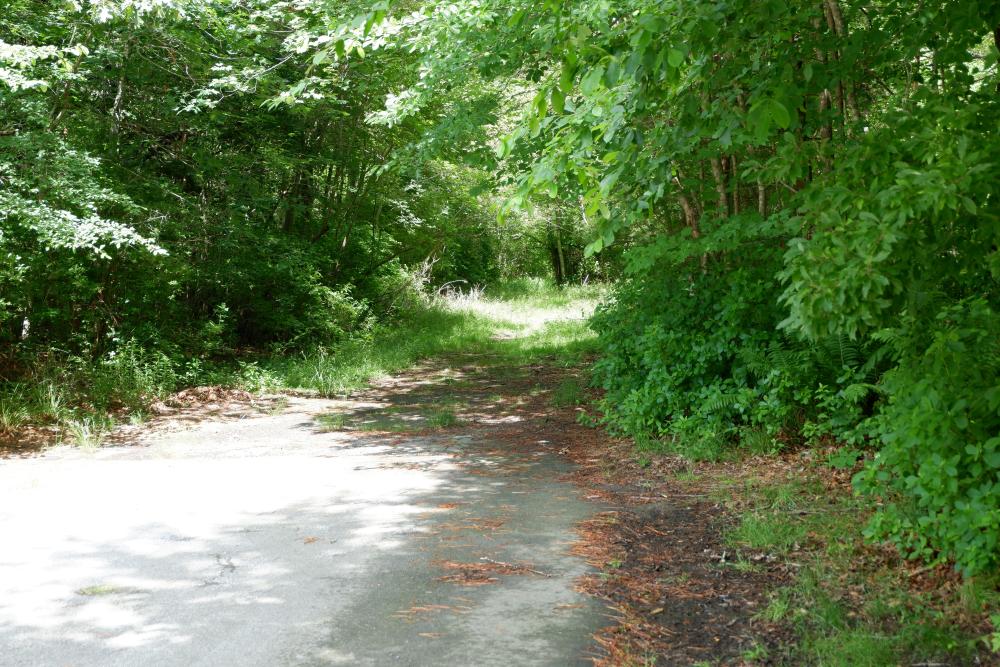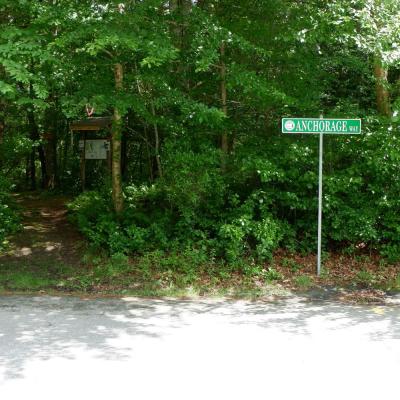Land trust seeks to remove road degrading wetland in Mattapoisett
MATTAPOISETT — Anchorage Way is a short and quiet residential street near Mattapoisett Neck Road, but for nearly 50 years an extension of the asphalt road has degraded the wetland surrounding it. Mattapoisett Land Trust is in the early stages of putting an end to that.
The street was constructed around 1970, according to Mattapoisett Land Trust President Mike Huguenin. Now shrouded by a sea of green foliage, the asphalt strip off Anchorage Way stretches into forested wetlands, which “immediately and quickly” deposits fresh and brackish water into a salt marsh, damaging it, Huguenin said.
Now, a plan to remove the road will “restore the ecological health of the area,” Huguenin said.
The altered flow of water caused by the road extension has caused phragmites — an invasive plant that feeds on brackish water — to grow at the edge of the salt marsh, according to Huguenin.
Healthy, wet woods usually don’t have phragmites in them and the plant isn’t particularly beneficial either, he said.
Huguenin presented the proposed project to restore the wetland off Anchorage Way to the Mattapoisett Select Board on Tuesday, June 25.
Through the town, Mattapoisett Land Trust will apply for a grant from the Buzzards Bay National Estuary Project, a unit of the Massachusetts Office of Coastal Zone Management that provides funds to municipalities for protecting and restoring water quality in Buzzards Bay and its watershed.
“The idea is that we can probably put this back the way it was,” Huguenin said.
If accepted, the grant would award somewhere between $60,000 to $90,000 to fund a conceptual plan and permitting phase of the project.
Mattapoisett Land Trust will hear back about the grant in the fall, according to Huguenin.
There are a number of grant opportunities for freshwater restoration, so if the application to the Buzzards Bay National Estuary Project fails, Mattapoisett Land Trust will keep trying, Huguenin said.
“My intention is we’ll keep going on this until we find the money we need for it,” he said.
The construction of the project would require another round of grant funding and would likely entail removing the pavement and road base, putting natural soils back into the site and reshaping the land to look like it did prior to when the road was built, according to Huguenin.
That would shift the flow of the natural groundwater and surface water to the south rather than into the salt marsh, get rid of phragmites and create “a much nicer end of Anchorage Way,” Huguenin said.













